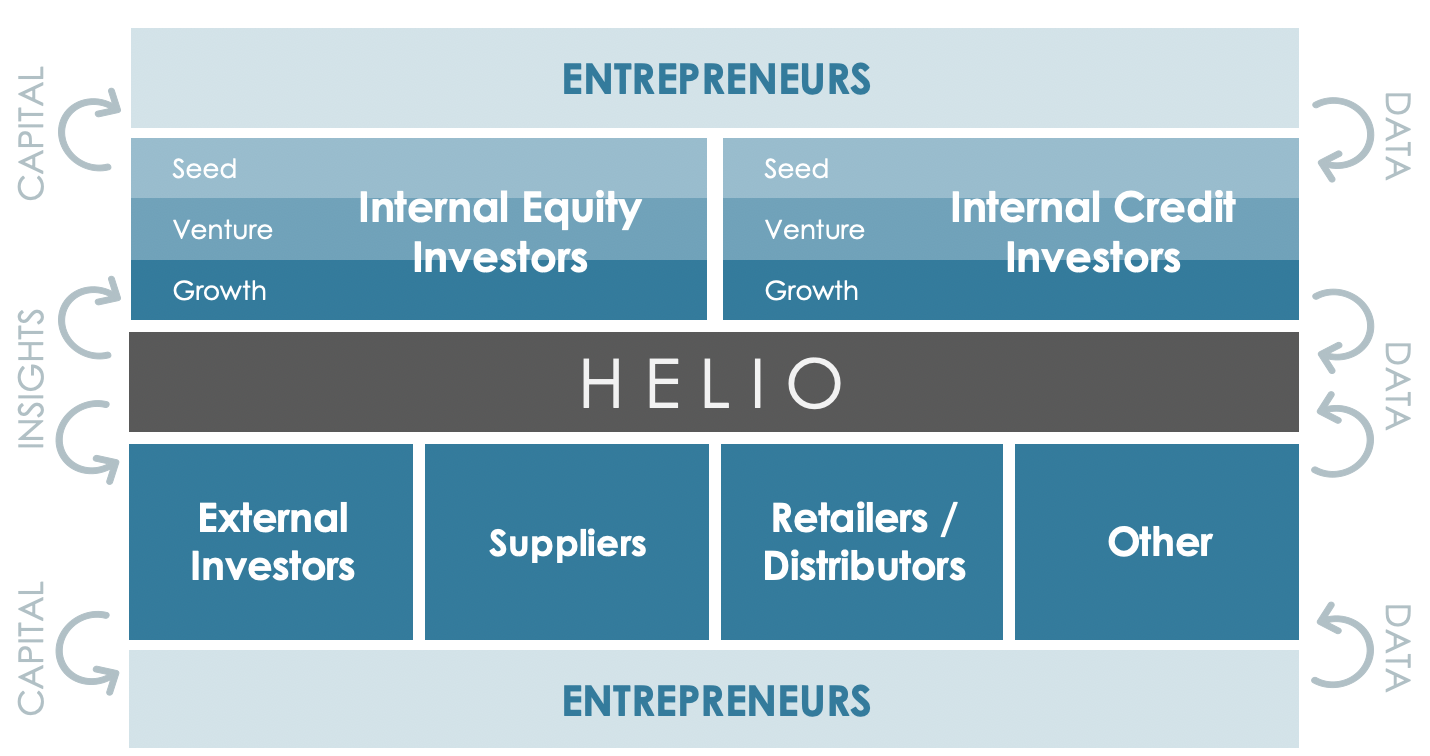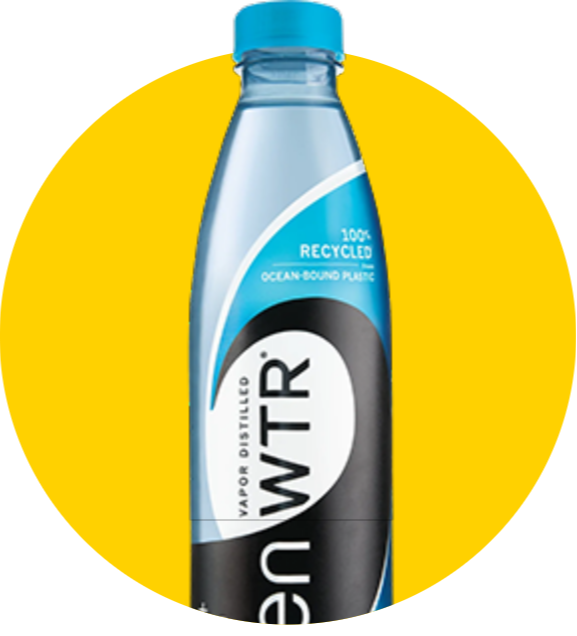Navigating the private markets today is the equivalent of hailing a cab during rush hour or finding a newly released movie at a nearby Blockbuster — ten years ago. Before technology intervened, you had to be in the right place at the right time. Decision-making in the private markets is just as circumstantial: it is opaque, reliant on personal networks, and largely driven by heuristics.
Closing a deal is a resource-intensive, relationship-based process for private companies. And it’s highly uncertain — VC firms typically engage hundreds of companies for each investment they make. Implicit bias breeds disparities that are not just inefficient — they’re inequitable (1).
There are two key reasons these problems exist for privately held companies:
- Lack of transparency: Access to information about private companies is limited. Without a common currency to compare and exchange data, decision-makers rely on asymmetric information. In the absence of information, people rely on gut instinct.
- Lack of efficiency: Sourcing companies and making decisions without adequate data is highly intensive. It calls for in-person handshakes (in a non-COVID world), manual processes, and broken chains of communication.
At CircleUp, we are developing technology to remove these structural barriers to allow for more effective and equitable resource allocation decisions.
CircleUp’s mission is to help entrepreneurs thrive by giving them the capital and resources they need. Our vision is to create a transparent and efficient market that drives innovation forward for all.
Realizing this vision is a massive challenge. How can we bring transparency and efficiency to a world where information is intentionally kept private? We believe the solution is to create a knowledge graph of the private company lifecycle — a single source of truth that converts asymmetric information into common knowledge.
Common knowledge drives markets to work by closing the information gap between supply and demand, allowing both sides to operate with more conviction and efficiency. Innovative technology companies have already brought this transparency to certain markets: think Zillow with real estate, Bloomberg with the stock market, Amazon with price discovery, Google with search ads, or Upwork with labor markets.
As our world becomes increasingly digital, we’re discovering new ways to access, store, and manipulate data to tap into previously impenetrable industries. CircleUp is at the forefront of recent advancements in big data, and we’re harnessing AI to unlock economic value through a more transparent and efficient private market — democratizing opportunities for entrepreneurs along the way.
We have built Helio to create a knowledge graph of the private sector, putting data in the hands of industry players. Helio is a technology platform that algorithmically finds, classifies, and evaluates companies to power data-driven decision-making. The foundation of Helio is an enormous repository of private company data that we’ve been collecting from hundreds of sources since our earlier days as a marketplace.
While our mission and vision have remained unchanged, our strategy has evolved over time. We provide capital and resources to entrepreneurs through investment vehicles built on top of Helio, and we’re beginning to license the technology externally. To start, we’ve focused on a single industry (consumer packaged goods, or CPG), a single stage (emerging brands), and a single geography (North America). Like other disruptive innovations, our initial market intentionally targets an underserved customer — it is a wedge for our long-term strategy, which spans much further.
Here are the steps we’re taking to bring transparency and efficiency to the private markets: (I) Build private market intelligence platform, (II) Scale investing strategies on top of platform, (III) Apply decision-making engine externally.
Together, these strategic pillars will sustain a virtuous cycle of data within the private market ecosystem. It will look something like this:

I) Build private market intelligence platform
We’re creating a dynamic map of the private markets, starting with an industry that readily satisfies the characteristics of rules-based decision-making. CPG alone is a massive market, contributing ~10% of US GDP. It has an abundance of data because CPG companies want consumers to know everything about them (pricing, ingredients, distribution, and much more). It also has standardized metrics because all brands have similar business models — they make a product, and sell the product (there’s no freemium or advertising model).
Despite these characteristics, even publicly available data on CPG companies can be extremely hard to capture. Information on brands and their products is ephemeral, scattered across hundreds of sources, and devoid of standard identifiers.
CircleUp has been ingesting this unstructured data for years, stitching them together across hundreds of disparate sources, and classifying each brand at scale to construct our knowledge graph. We’ve processed hundreds of terabytes of data on over 1 million companies, and have developed deep insights that we can put to commercial use (2).
II) Scale investing strategies on top of platform
Helio currently powers our internal equity and credit products, and has been a meaningful performance driver across all stages of the investing process. CircleUp Growth Partners, our $125M discretionary equity fund, is marked in the top quartile for its vintage (3). CircleUp Credit Advisors, our credit division, leverages our data capabilities to offer lower cost, flexible working capital solutions in the 12-20% APR range — targeting 10%+ net returns and losses in the low-single digits. Helio enables our investment teams to objectively identify and diligence breakout CPG brands early in their lifecycle, and provides data-driven insights to accelerate their growth.
There are three key advantages in focusing on our internal investing teams to validate and develop the technology:
- Prove initial problem-solution fit. While some private investors are putting cursory effort into leveraging technology, most incumbents think heuristics work well enough. We’re eating our own dog food, just as Salesforce, Facebook, and Google have done before (4). By doing so, we’re validating our hypothesis that Helio is better at driving scalable, repeatable decisions than any industry expert. All with limited Key Person risk.
- Build a tight feedback loop. By starting with internal customers, we can more rapidly build-measure-learn through a tight feedback loop between the technology, our investment teams, and the entrepreneurs we serve. In addition, the more training data Helio ingests through our funds’ daily interactions with CPG brands, the more effective it becomes at collecting intel on the broader industry (5).
- Reinvest in the technology. Private investing is a very lucrative business: asset managers have high margins (typically ~40-60%) and stable, recurring revenues (6). You can think of management fees as 10-year SaaS contracts — and there’s additional upside from carry (7). By monetizing our technology initially through fund structures, we can methodically plan for ongoing investment in Helio as we begin to expand outward.
So, what’s the path forward?
We will expand our data-driven investing platform across four growth dimensions. It is ambitious. It will be hard. Everything in life worth doing is hard.
- Expand existing investment strategies: Today, we have a discretionary fund and similar sized credit fund, both backed by leading institutional LPs. As we scale both strategies, the vehicles will be a mixture of discretionary and systematic approaches, leveraging data-driven techniques to build a more scalable and repeatable form of private investing than has ever before existed. By stacking our initial funds, CircleUp’s revenue engine will compound on itself to provide fuel for subsequent phases of growth.
- Expand by stage: We’ll raise growth-stage and seed-stage funds, also with a combination of discretionary and systematic approaches. This is an important next step for Helio to capture the full private company lifecycle, but we won’t give up our share of the early stage. By removing friction from the investing process, our technology will allow us to write smaller checks for smaller brands even as we march up-market.
- Expand by geography: After scaling our existing strategies and expanding by stage within North America, we will break into other geographies that have large consumer industries with substantial data and strong historical returns. While Helio will have to adapt to new languages and market dynamics, we’ve designed our technology to have extensible capabilities beyond our current market. Further, the standardization of CPG business models (e.g. make a product, sell the product) will make our first international foray much more manageable.
- Expand by industry: After penetrating the global consumer market, we’ll introduce Helio to new industries. We’ll start with sectors adjacent to CPG such as restaurants and retail, then we’ll tackle other industries that meet the criteria for rules-based decision-making. In the near-term, though, the CPG equity market is more than $150B globally, while credit represents an even larger opportunity — and we’re only getting started.
III) Apply decision-making engine externally
We first set out to prove the technology works. Through our internal investing strategies, we’ve shown Helio can drive conviction for sourcing, execution, and value creation. We are now ready for the market.
And the market is now ready for us. Players across the consumer and retail value chain are desperate to engage with emerging CPG, and see many use cases for Helio’s knowledge graph. Institutional investors want exposure to an attractive asset class; large CPGs seek acquisition targets at the forefront of nascent trends; and retailers need brand- and category-level insights to help them optimize assortment so they can avoid competing on price alone (8).
Applying Helio externally will enhance the power of the platform as a whole. We’ve watched this playbook unfold with BlackRock’s Aladdin, a risk analytics software initially built for internal teams that is now an integral tool for asset and wealth managers across Wall Street, supporting $18+ trillion in assets. By licensing the technology to external customers, BlackRock has proliferated the flow of data within its own system. The more information Aladdin collects from others, the more value it creates for internal and external users alike.
Similarly, CircleUp will remain the gatekeeper to private market intelligence as external customers provide new sources of data and feedback in exchange for Helio insights. As we expand this feedback loop, the technology will grow more powerful to all users. By facilitating objective decisions outside our own purview, we’ll have an invisible hand in creating equitable opportunities for more entrepreneurs.
So, where do we go from here?
We are taking measured steps to prove out the platform externally, starting with initial pilot partnerships. So far, Helio has proven valuable to our customers’ internal processes, and their feedback has contributed to our ongoing R&D. As we continue to build the product, we’ll target a broad set of partners that want to fuel development beyond emerging consumer North America. Incorporating their key needs and data sources will plant the seeds for both our investing and insights businesses to move up-market.
Much like marketing has moved from Madmen to Moneyball, we expect to see a similar transformation in the private markets. Players across the private sector know data drives better decisions, and better decisions drive innovation. Not all are ready to surrender heuristics entirely, but they recognize data is the way forward — and no one wants to get left behind.
In Conclusion
CircleUp’s mission is to help entrepreneurs thrive by giving them the capital and resources they need. As we fulfill our mission, our vision is to create a transparent and efficient market to drive innovation forward for all.
Our strategic pillars will govern every step we take toward achieving this vision: (I) Build private market intelligence platform, (II) Scale investing strategies on top of platform, (III) Apply decision-making engine externally. Over time, we’ll shine a light on the entire private market as Helio emanates far beyond our own four walls.
(1) For example, there’s a $4.4T+ opportunity in closing the funding gap for minority-owned and female-owned businesses alone.
(2) Helio’s coverage of 1M+ brands is a vanity metric, as ~50% of them are either dead or irrelevant. These brands enable Helio to understand causes of death and irrelevance.
(3) Per Cambridge Associates (pg 14). Benchmark reflects all of US venture capital. CircleUp’s returns are not yet realized.
(4) Salesforce uses their own CRM internally, Facebook uses their own social platform for internal communication, and Google uses AdManager (formerly DoubleClick) as their own ad server for their Google AdWords business (and also sells the tech to web publishers).
(5) We believe more data will only yield better coverage and precision up to a certain point. That point still requires meaningful concerted effort to gather data over several years. In addition, there are different types of data and different uses, so while we may reach diminishing returns on one model or from one data set, there are countless others where we have yet to scratch the surface.
(6) Pre-tax margins, per Pitchbook.
(7) Management fees represent an annual percentage of the funds committed to a General Partner (GP). Carried interest is a performance fee, representing the GP’s share of profits realized by the fund’s investors, typically contingent upon a specified rate of return. Our model resembles SaaS businesses in several key ways: 1) we have sticky revenue (for each fund, about half the revenue from management fees is locked in for 10 years); 2) we have a single technology product that serves various applications, and we repeatedly sell some version of that same product to our customers; 3) we have high margins (our funds should average a 50%+ contribution margin); 4) unlike traditional VC, our product is scalable and we have limited Key Person risk because the core value of our investment platform is the technology itself.
(8) Both large CPGs and retailers have rich data on where their brands are sold and what brands they’re selling, respectively, but neither those sources nor the commoditized data they buy effectively captures the long-tail of innovation.
Zen Water
A water brand with an estimated revenue of $10-$20M (a +407% YoY increase)
Recess
A carbonated drink brand with an estimated revenue of $10-$20M (a +104% YoY increase)
Mad Tasty
A water brand with an estimated revenue of $1-$5M
Shine Water
A water brand that is in 3,000 retail doors (a +329% YoY increase)
All Wello
A juice brand with an estimated revenue of $1-$5M (a +89% YoY increase)
By understanding how these trends will impact the CPG landscape, you can position your business for success.
To learn more about Helio or get in touch, visit heliodata.com.






